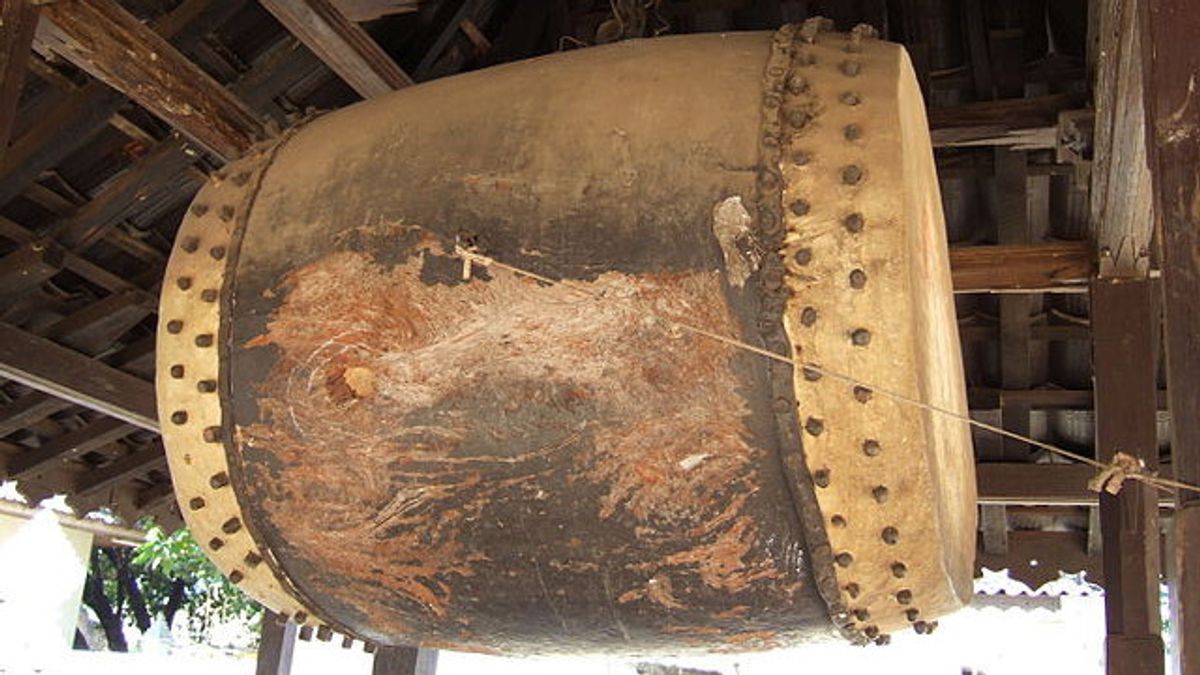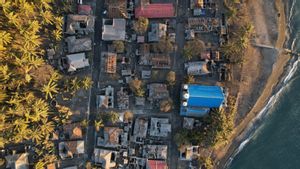
JAKARTA - Ahead of Eid al-Fitr is always greeted with echoes of takbir and the accompaniment of beduk. In addition, another keguaan of beduk is nothing but a sign that the time of Prayer is coming soon. So what's the history of beduk?
beduk resembles a drum drum instrument. The drums are made of bull skin. The use of beduk has been a tradition for generations.
During Ramadan, the sound of beduk is also often heard. The echo of his voice creeps long so as to reach people in the distance to invite people to pray.
Indonesia with cultural diversity has a form of local wisdom in calling people to Salat. In the past, before there were loudspeakers or speakers, beduk served as a medium that signifies five-time Prayer.
For example, Academician of Sultan Maulana Hasanuddin State Islamic University banten in his study mentioned that it is a traditional musical instrument since thousands of years ago.
Sunan Kalijaga da'wah toolQuoting Agus Sunyoto, he explained that beduk is one of the landmark tambur for the worship of kapitayan believers. Beduk is maintained by Wali Wongo as a marker of the entry of Salat time and is established before the adhan.
Beduk became Sunan Kalijaga's da'wah strategy to accelerate public acceptance of Islam. Sunan Kalijaga at that time ordered Sunan Pandanarang to make beduk and kentongan.
So, in addition to beduk, kentongan is also used for prayer time callers. The sound of barrels on kentongan means the mosque is still empty or in Javanese, kothong.
While beduk with the sound of deng-deng means masji still fit or sedeng. In terms of da'wah, beduk is used to call to the goodness of worshiping Allah SWT.
Since PrehistoryMalang State University archaeologist Dwi Cahyono quoted historia page explaining that the roots of beduk history have begun since prehistoric times, namely in the metal age.
He reinforced his opinion by saying, man at that time already knew nekara and moko made of bronze, shaped like dandang and found in Sumatra, Java, Bali, Sumbawa, Roti, Leti, Selayar, and Kei Islands.
The function of the tool is used in religious events, dowry, and rain-requesting ceremonies. During Hindu times, beduk served as a medium to gather the population to prepare for war. The number of beduk at that time was still limited and the spread was not evenly distributed in Java.
In Kidung Malat, the term used is beduk and teg-teg, a type of drum with a larger size than beduk. When Cornelis de Houtman (1595-1597) came to Banten, in the record he mentioned at each crossroad there was a drum hung and sounded with a bat hanging next to it.
The sound of the device becomes a sign of danger or a time sign that is sounded in the morning, noon, or midnight.
Largest and oldest bedukThe largest, strongest and oldest beduk in Indonesia is located in Darul Muttaqien Mosque, Purworejo, Central Java. The creation was ordered by Adipati Tjokronagoro I, the first Regent of Purworejo in 1762 Java or 1834 AD.
The length of this beduk is 292 cm, the circumference of the front is 601 cm, the circumference of the back is 564 cm. Then the diameter of the front is 194 cm and the diameter of the back is 180 cm.
This giant beduk is made so that his voice is heard as far as it is to invite worshippers to perform Salat.
Other MEMORY
The English, Chinese, Japanese, Arabic, and French versions are automatically generated by the AI. So there may still be inaccuracies in translating, please always see Indonesian as our main language. (system supported by DigitalSiber.id)








